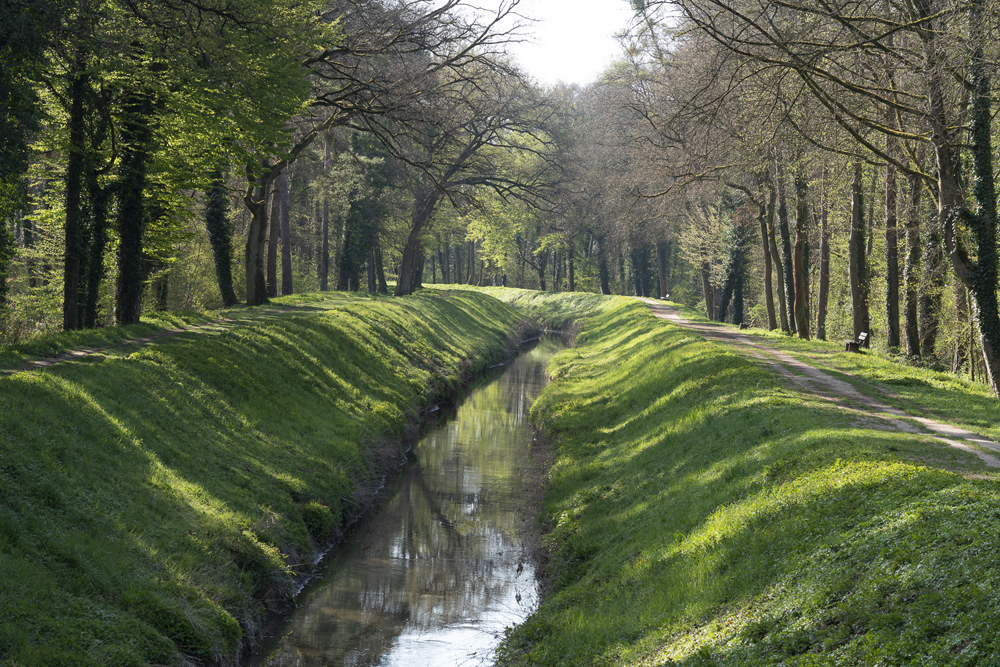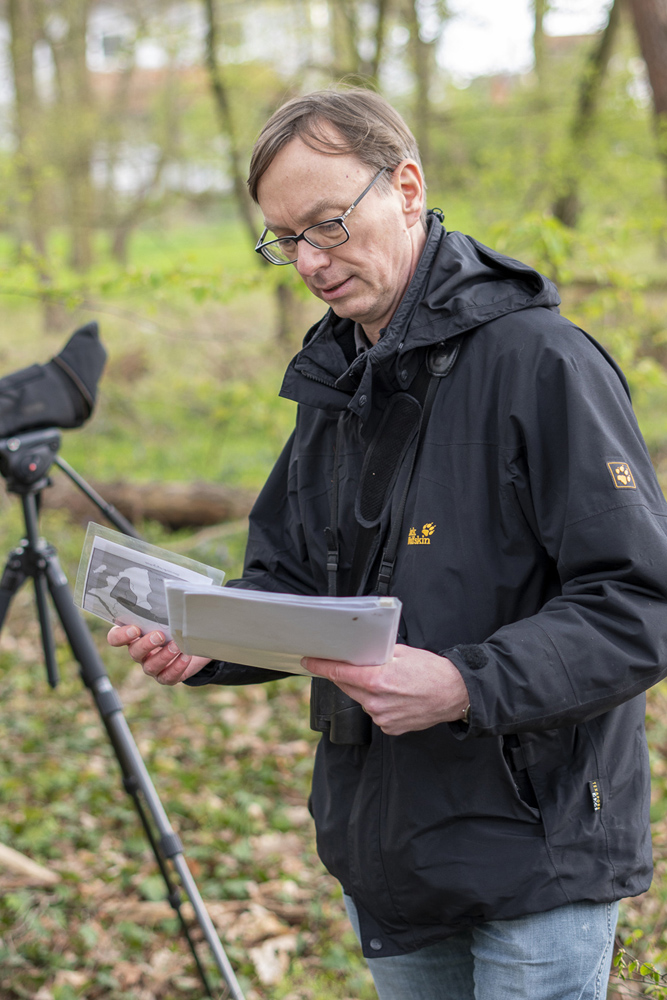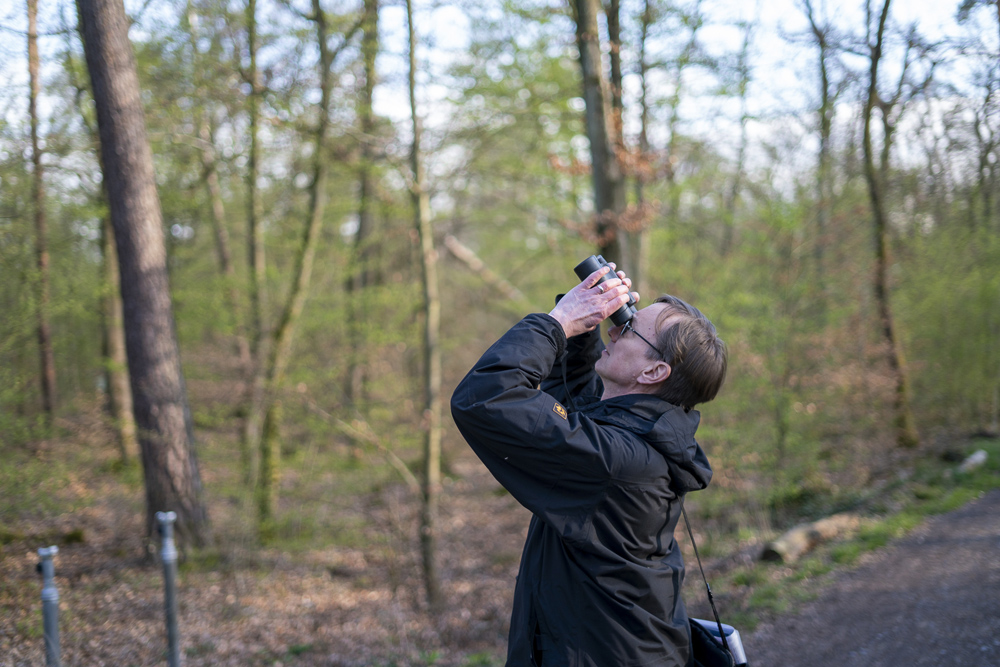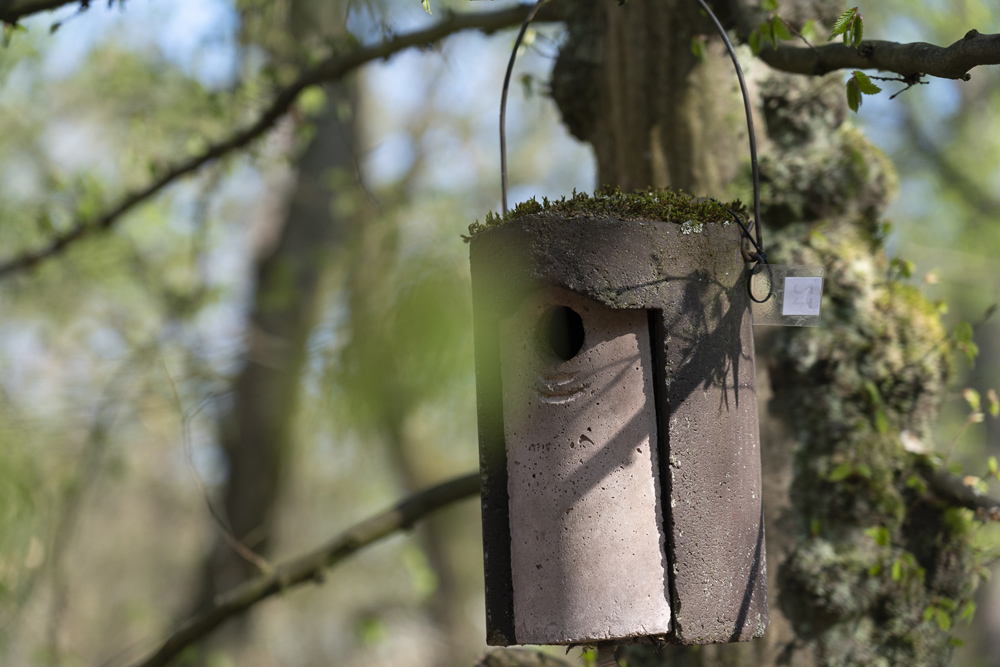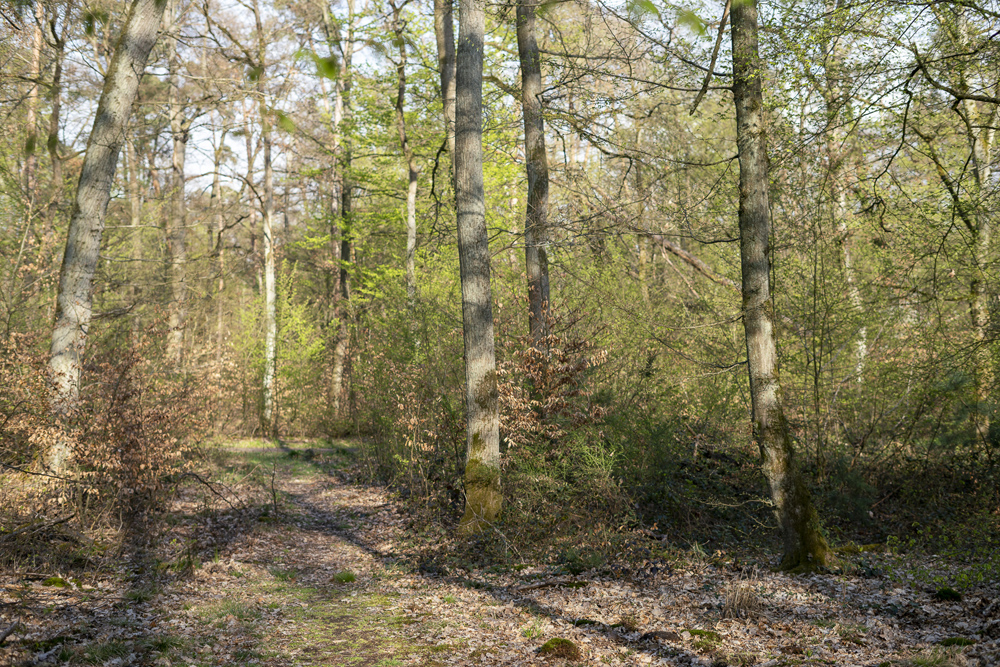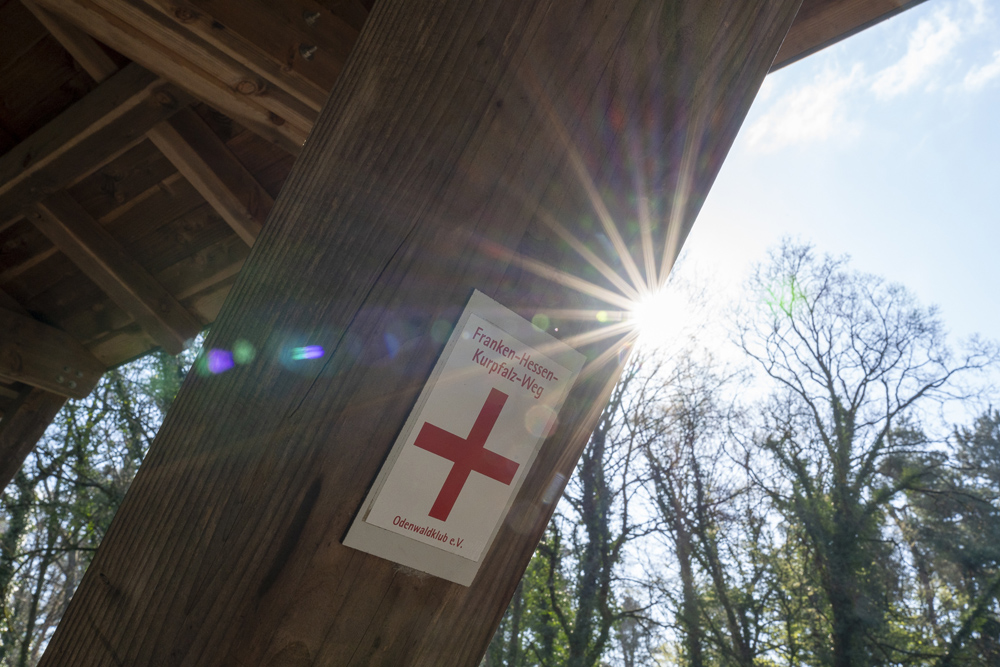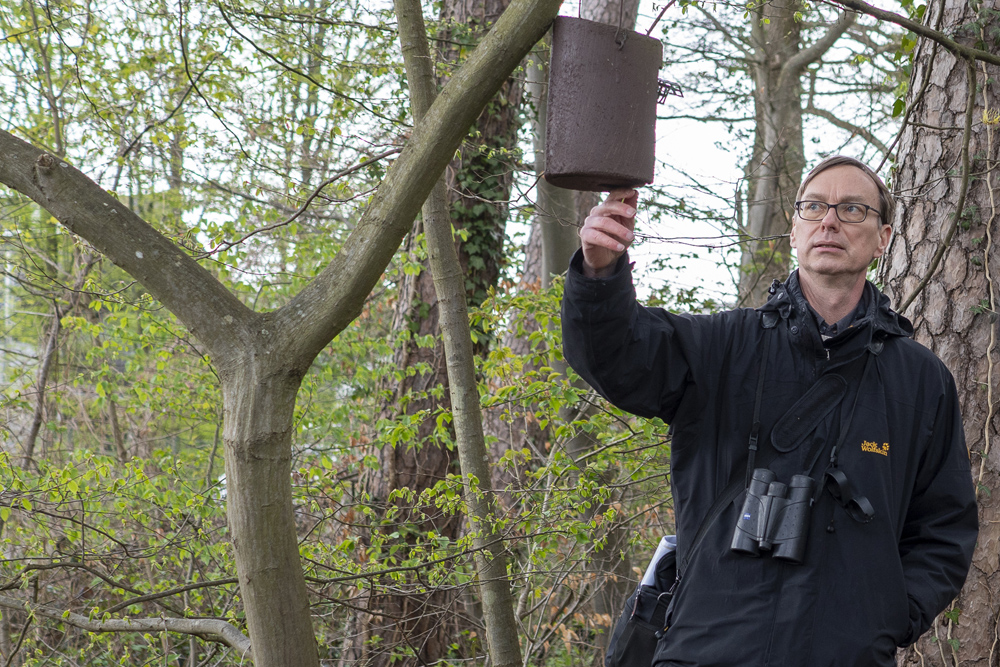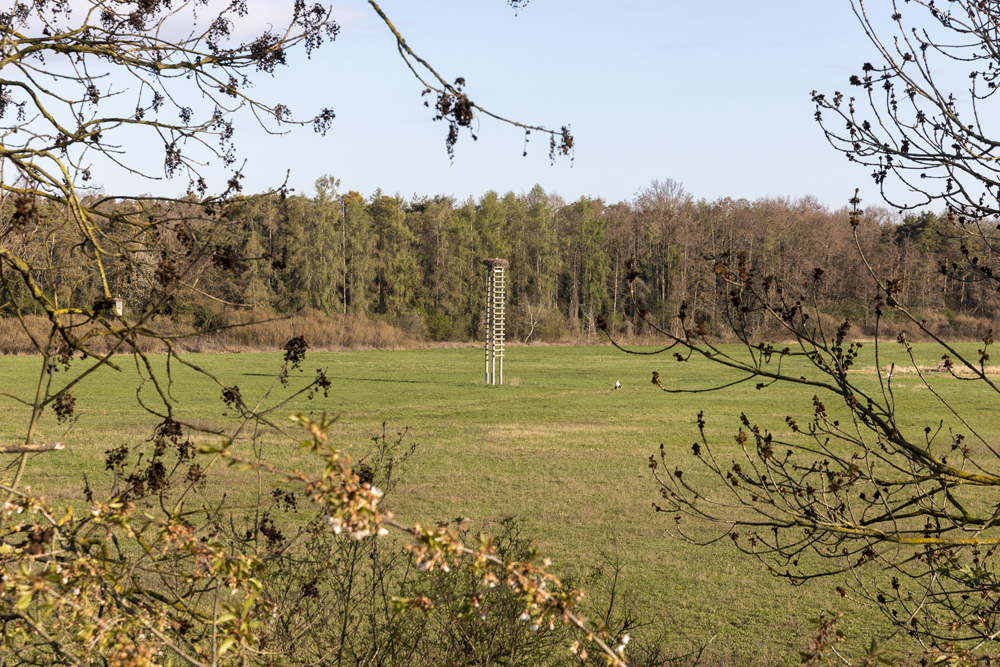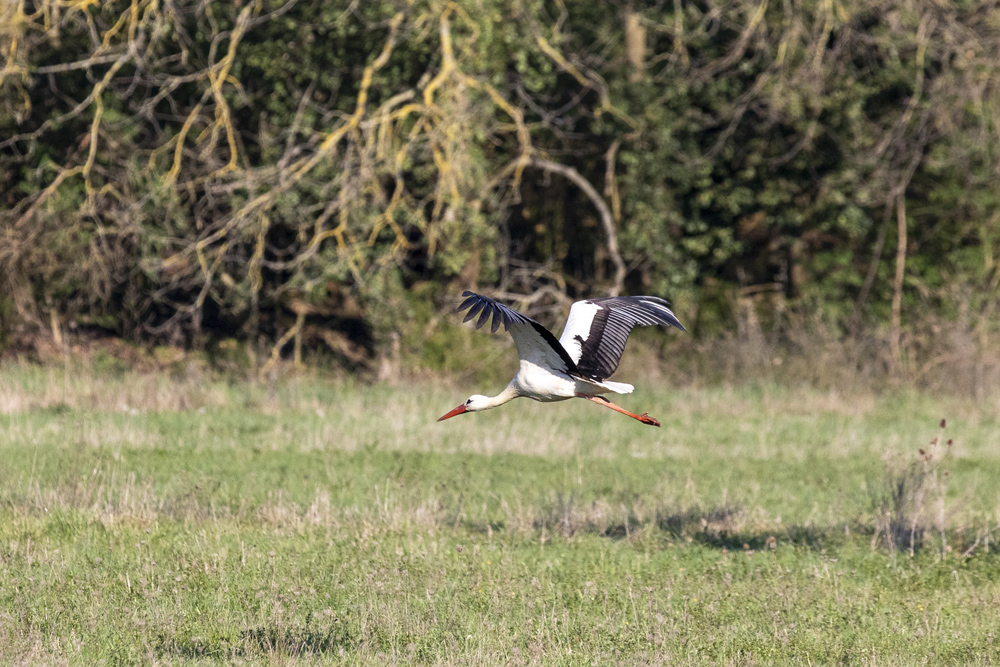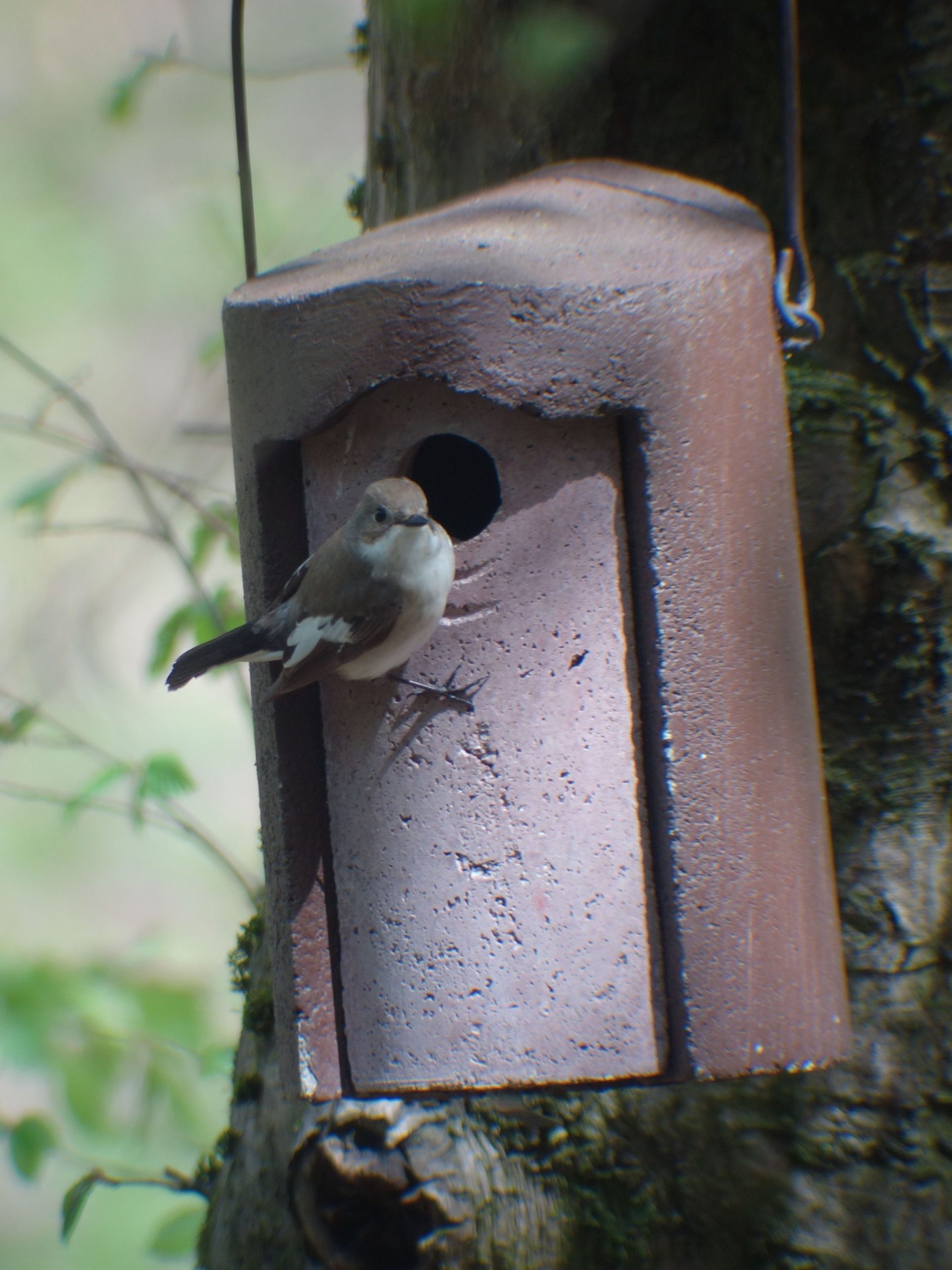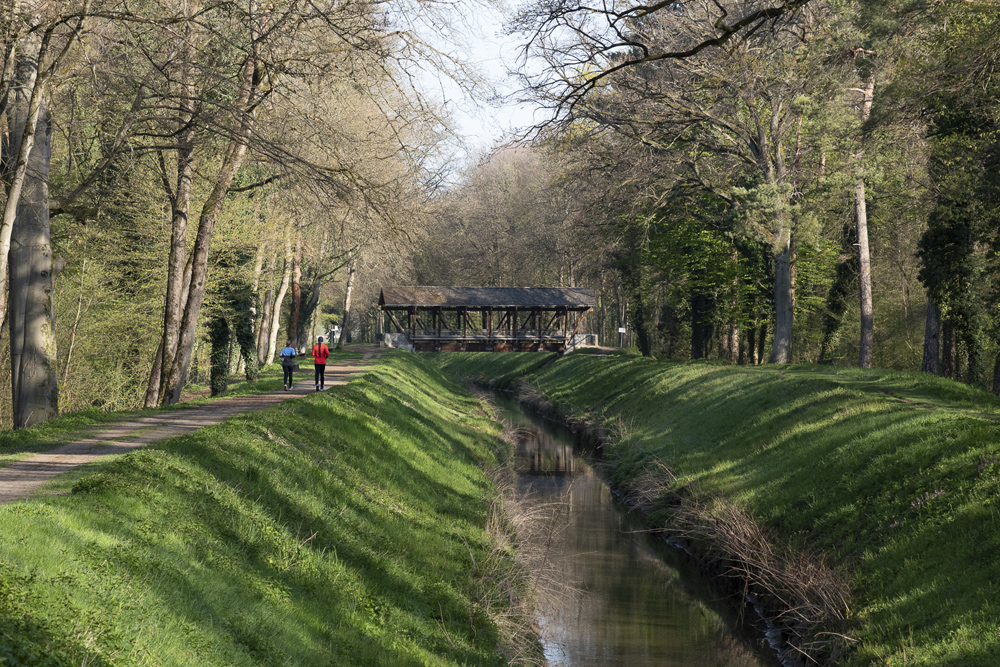A leafy environment with a thousand voices: The Dannhecker Wald forest offers grounds for peace and relaxation—not only for people. Also many birds brood and sing in the area situated between Walldorf and Sandhausen. One of the reasons that this is possible is because of Harald Kranz, who takes care of almost 100 nesting boxes. And also because of a bit of chaos.
Death precedes new life in the forests… The upper part of the beech tree is dead. Standing at the side of the path, it looks somewhat pitiful. However, the roundish holes at its top indicate that a number of woodpeckers hammered their tree holes into the soft, dead wood over the past few years. Three tree holes, one below the other. In many working forests, these “woodpecker flutes” fall victim to the saw sooner or later. But on this beech tree, the white outline of a bird is emblazoned. It is a message for the forester: Please leave this tree as it may be a place for breeding.
The Dannhecker Wald forest is situated in the Rhein-Neckar-Kreis district between Walldorf and Sandhausen, some ten kilometres south of Heidelberg. Trippers and residents go for a walk on this mild spring evening, searching and finding peace and relaxation. They amble along on the embankment next to the Hardtbach brook that runs through the forest or they enjoy the picturesque view from the roofed Lutherische Brücke bridge, after which writer Arnim Töpel named a detective novel written in dialect. The birds offer a beautiful choir of many voices—for free: moaning shouts from the great spotted woodpecker every now and then and the robin redbreast up in the branches sings its tinkling song. And soon, the oriole will produce its fluting song, hidden well up in the tree canopy. The bird with the striking-yellow plumage is called “Vogel Bülow” in the German vernacular and in French it is known as “Loriot”, which Vicco von Bülow, the great German comedian, chose as his pseudonym.
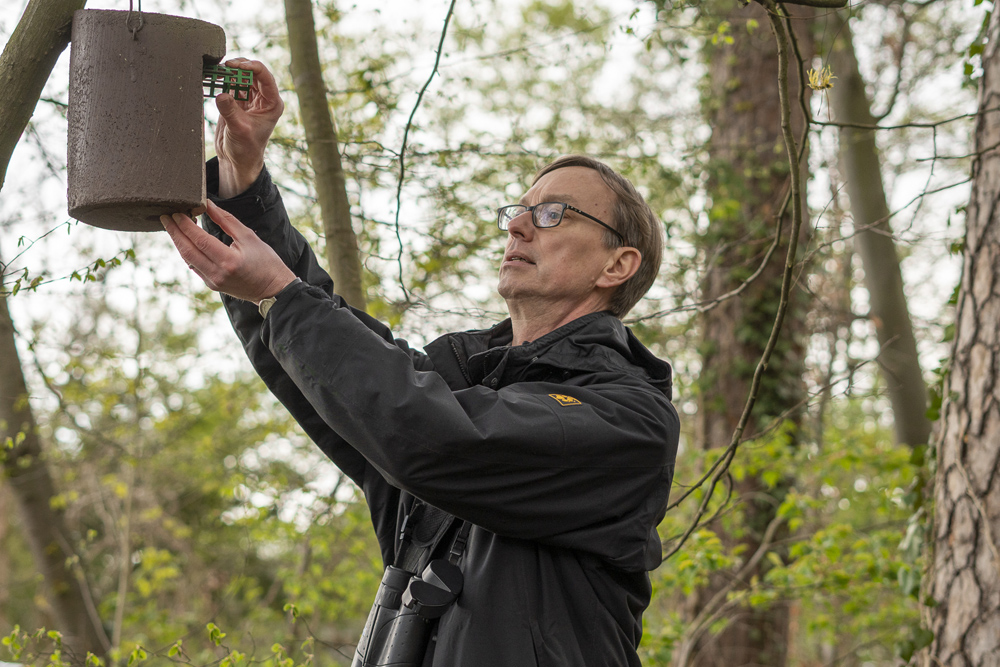
Is bird life still in order here? Harald Kranz wouldn’t put it this general way, but from a conservationist’s point of view of, the Dannhecker Wald is a town forest that can act as quite good a model. Because death is not cleared away straight away and because a little chaos is allowed here. “Unfortunately, dead trees conflict with people’s mania for order,” says the chair of the Leimen-Nußloch local group of the German Nature and Biodiversity Conservation Union (NABU). And many foresters consider dead wood a safety risk for visitors to the forests. Dead wood, though, offers birds a place to raise their offspring in a protected environment and provides a home and food for innumerable insects and worms, which, in turn, is vital for many other animals.

